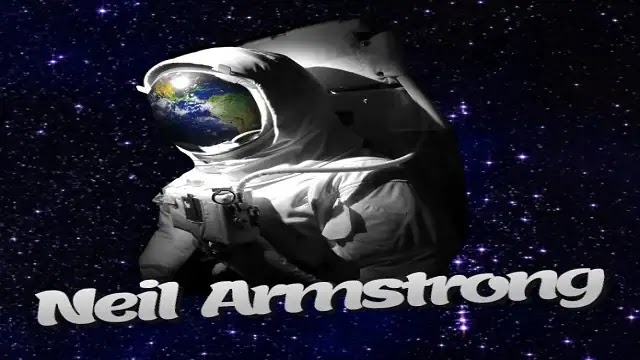NEIL ARMSTRONG
Astronaut Neil Armstrong developed a fascination with flight at an early age and earned his student pilot’s license when he was 16. In 1947, Armstrong began his studies in aeronautical engineering at Purdue University on a U.S. Navy scholarship. A few years later, Armstrong joined the National Advisory Committee for Aeronautics (NACA). In his personal life, Armstrong started to settle down. He married Janet Shearon on January 28. 1956. They had three children two sons and one daughter. That same year, Armstrong joined the astronaut program and he served as the command pilot for his first mission, Gemini VIII. He and fellow astronaut David Scott were launched into the earth’s orbit on March 16, 1966.
Armstrong faced an even bigger challenge in 1969. Along with Micheal Collins and Edwin E “Buzz” Aldrin, he was part of NASA’s first manned mission to the moon. Serving as the mission’s commander, Armstrong piloted the Lunar Module to the moon’s surface. At 10:56 PM, Armstrong exited the Lunar Module. He said, “That’s one small step for man, one giant leap for mankind”, as he made his famous first step on the moon. For about two and half hours, Armstrong and Aldrin collected samples and conducted experiments. They also took photographs, including their own footprints. Returning on July 24, 1969, the Apollo 11 craft came down in the Pacific Ocean west of Hawaii. The three Apollo 11 astronauts were given a warm welcome home. Armstrong received numerous awards for his efforts, including the Medal of Freedom and the Congressional Space Medal of Honor.
Armstrong remained with NASA, serving as deputy associate administrator for aeronautics until 1971. After leaving NASA, he joined the faculty of the University of Cincinnati as a professor of aerospace engineering. Staying active in the field, he served as the chairman of Computing Technologies for Aviation, Inc., from 1982 to 1992. In 2005 his authorized biography came out. First Man: The Life of Neil A. Armstrong was written by James R. Hansen. Even in his final years, Armstrong remained committed to space exploration underwent a heart bypass operation in August 2012. A few weeks later, on August 25, 2012, at the age of 82, Neil Armstrong died of complications resulting from cardiovascular procedures in Cincinnati Ohio.

